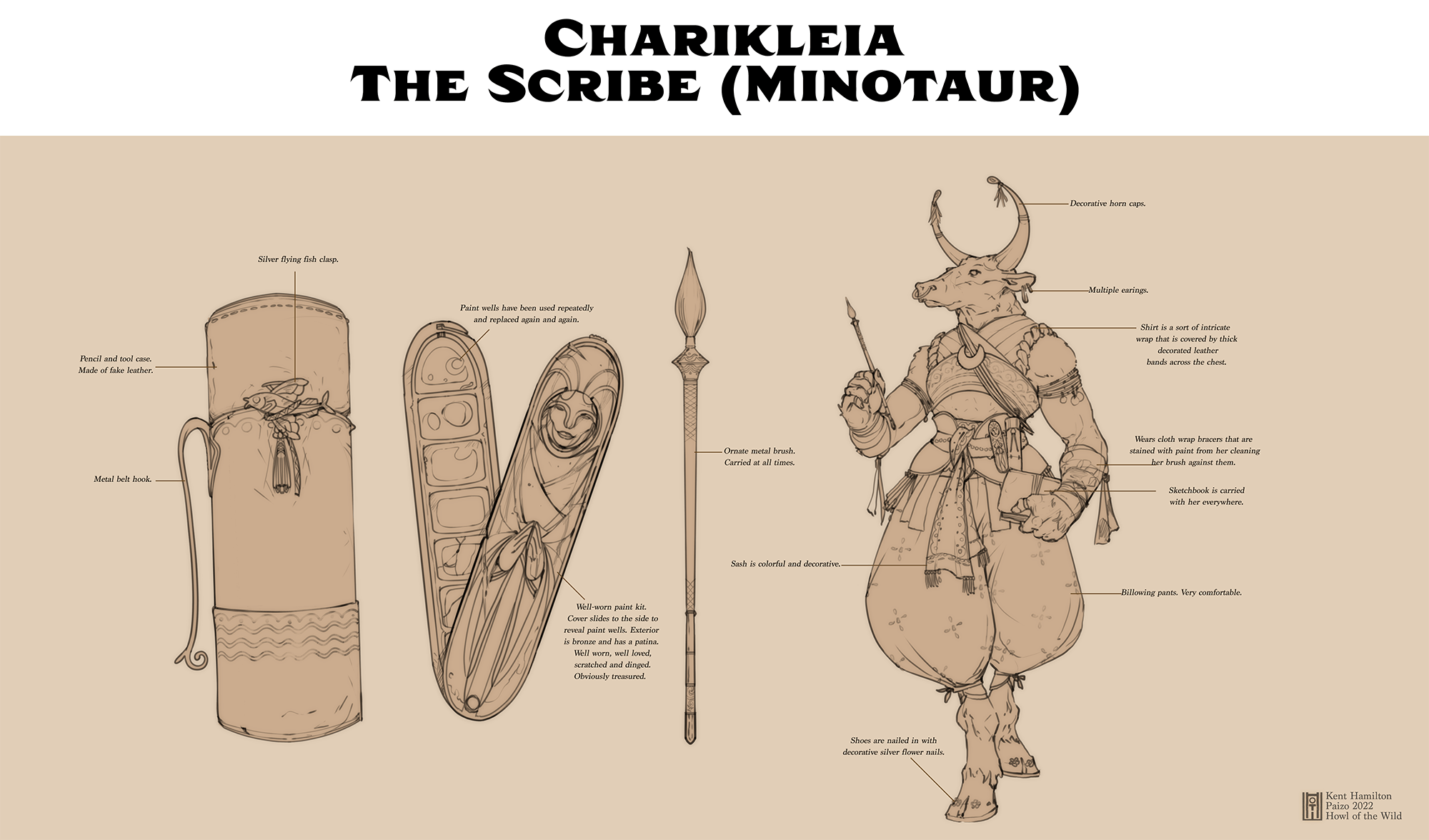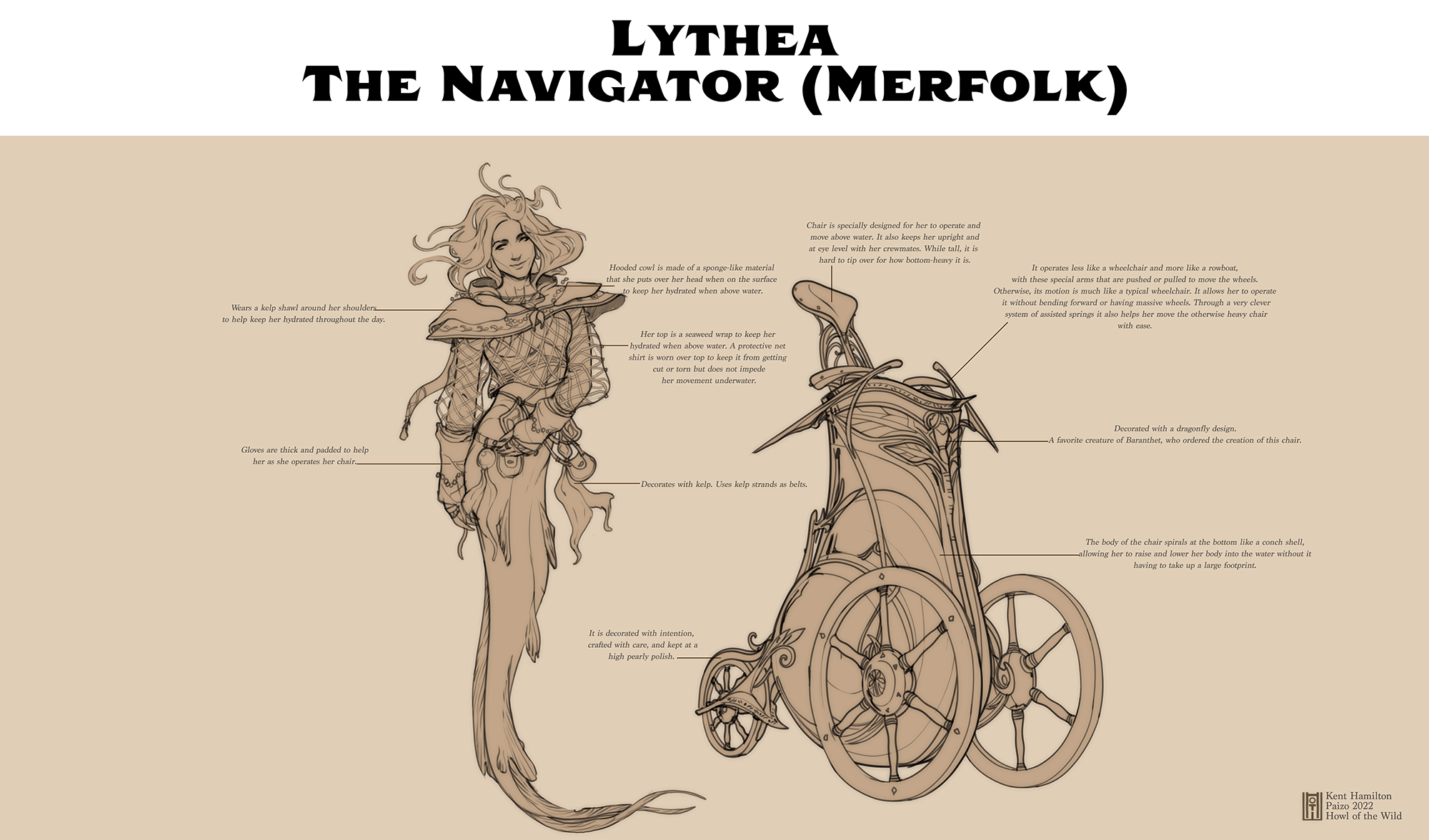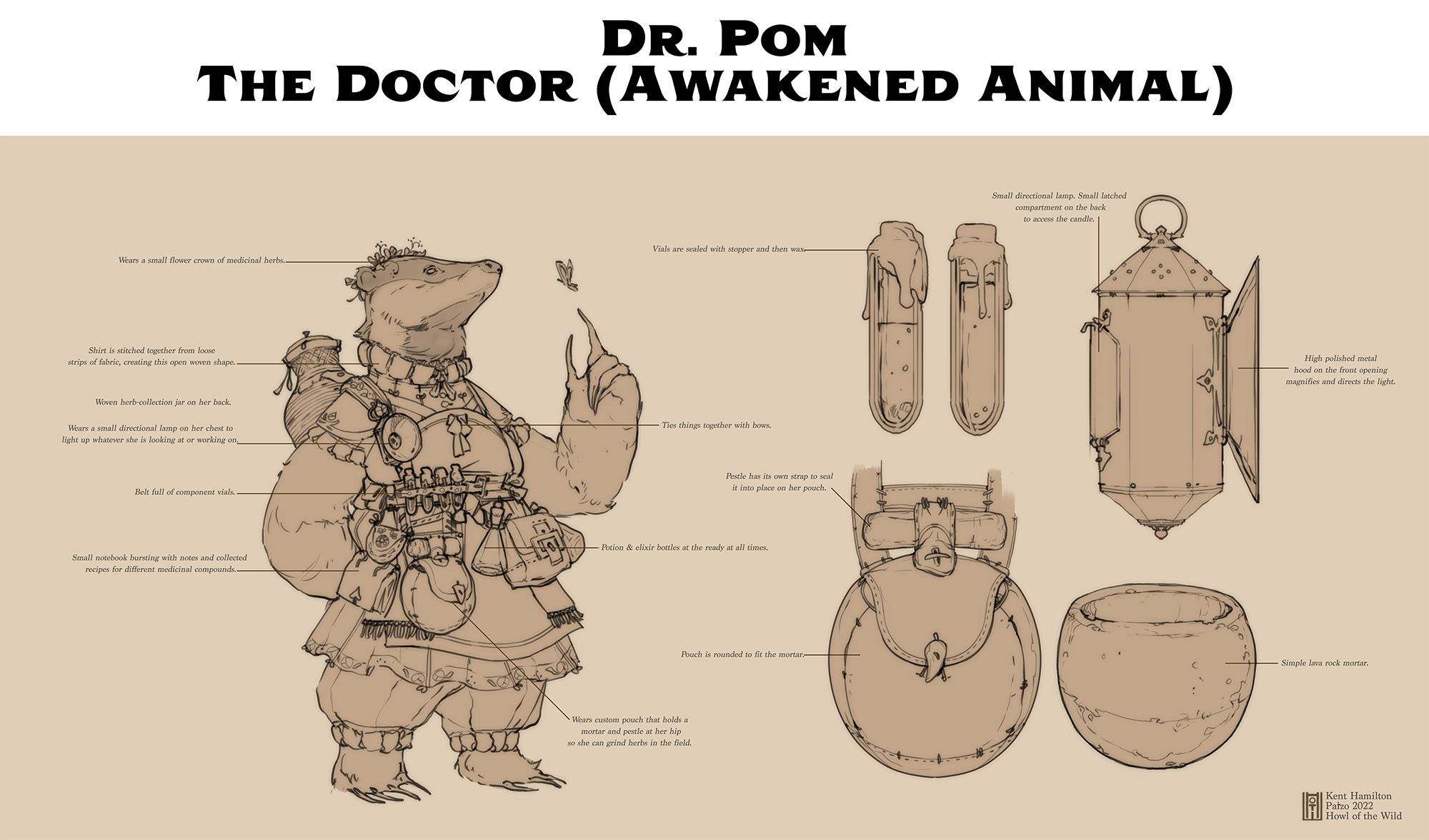I hope everyone had a great time at PaizoCon Online! It was great to talk to everyone in a little more depth about Pathfinder Howl of the Wild, and all the animals and beasts that this book about wilderness expedition contains as the Zoetrope airship journeys across Golarion in search of mythical beasts.
In addition to monsters, wilderness-inspired items and feats, and a whole lot more, Howl of the Wild comes with six new playable ancestries, each of which is represented by a different member of the airship’s crew. You’ll see these characters appear throughout the book (alongside our iconic characters), letting you get to know them over the course of their journey. The crew's snuck out a little earlier than we anticipated—that just goes to show, the wilds can't be tamed—so we thought we'd take the chance to introduce you to them. Having a unique cast for the book wouldn't have been possible without the superb work of art director Kent Hamilton, who designed each crewmate based on the personality and story lovingly written by that character's author.
Let's meet the crew!

Baranthet concept art by Kent Hamilton
You've already met Baranthet, the expedition leader who brings this crew together to travel across Golarion in his search for the four Wardens of the Wild—mythical creatures said to steward the great biomes of the planet. Baranthet's an iruxi, also known as lizardfolk, who will be getting a remaster in Player Core 2. He’s older than your typical adventurer and has spent most of his life reading rather than exploring, but he's excited to be setting off on a grand adventure, even if it took him a little longer than most to leave the library.

Charikleia concept art by Kent Hamilton
Charikleia is a minotaur from the Earthsong people on the Isle of Kortos. She's a studious research assistant to Baranthet, taking notes and field illustrations on each animal the ship comes across. As you might have seen at PaizoCon, minotaurs have a number of abilities to emphasize their strength, like an ability where they can fling allies across the field with their horns, not to mention great skill with stone and labyrinths.

The swift centaur Telero trailblazes ahead of the airship to make sure the way is clear for the scientists to follow. He's very capable, if a little hotheaded, and eager to prove himself. In addition to their speed, centaurs also have feats related to herbalism or archery—a skill Telero puts to good use with a number of signal arrows.

Lythea concept art by Kent Hamilton
One of the reasons the Zoetrope can always find its way is thanks to the skill of its navigator, Lythea, a merfolk blown far from her home, though she's sure to treat everyone with joy and laughter. Merfolk are an aquatic ancestry with many magical talents: shaping wind and water, crying pearls, or beguiling others with their siren song. Lythea gets around deck with the help of her "Little Sea," an example of a new item for aquatic characters debuting in Howl of the Wild.

Grefu concept art by Kent Hamilton
Grefu is the ship's cook, much to everyone's great fortune. A man of few words, Grefu is gruff and stoic, but loyal, often wordlessly giving an extra scoop of stew or slice of flatbread to a crewmate who's had a hard day. Grefu is an athamaru, an amphibious people primarily located in the undersea nation of Xidao in Tian Xia. Athamarus are highly communal and with a more physical bent, whether that's keeping coral symbiotes that can cleanse poisons from the blood, communicating via pheromones, or training pet eels to aid them.

Dr. Pom concept art by Kent Hamilton
While the crew are scientists, not fighters, people are bound to get a few scrapes on a long voyage—thankfully Dr. Pom's caring bedside manner and highly competent medical knowledge ensure everyone can always pull through (though she's a little lost in thought at the best of times). Dr. Pom is an awakened animal (in her case, a sand badger), a highly versatile new ancestry that allows you to play an animal that has gained sapience.

Ten concept art by Kent Hamilton
Lastly, we have the Zoetrope's accident-prone mechanic, Whose Antenna Is Askew, or Ten for short. They're a surki, a brand-new ancestry designed from the ground up for Howl of the Wild; rather appropriately so, as surkis are a subterranean people who burrow to Golarion's surface only in periodic generation digs, the most recent of which was triggered by the closing of the Worldwound. Surkis ambiently absorb magic, metamorphosing later in life with unique adaptations based on what they've absorbed. Ten is excited to experience every new thing they can on the surface, though this sometimes leads them into trouble.

The crew setting off on their grand journey around Golarion! Art by Mirco Paganessi
There's a lot we have to say about the crew, as well as the wild archetypes, items, and other player options coming in Howl of the Wild, so be sure to subscribe to the Pathfinder Rulebook line and stay tuned for Gen Con, where we'll be diving into a few of these new ancestries in more detail!
But that, explorers, is a story for another day,
James Case
Senior Designer